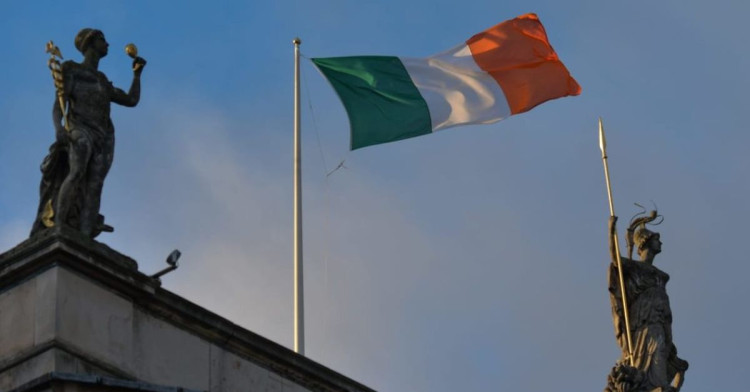So, now we know definitively that we have three candidates running to be the next President of Ireland – Catherine Connolly TD (Independent), Jim Gavin (Fianna Fáil) and Heather Humphreys (Fine Gael). It won’t be the shortest ballot paper in the history of Irish presidential elections come 24th October.
In 1945 and 1990, we also had just three candidates, and in 1959, 1966 and 1973 we had but two. In the three most recent presidential elections, we have become more accustomed to larger fields. In 1997, five candidates made the cut, with seven running in 2011, while six candidates ran in 2018.
What will be the implications of fewer candidates? Will it lead to a lower turnout, for example? Not necessarily. In 1990, with three candidates, turnout was 64.1%, the second highest in our history. It could be argued that this could be attributed predominantly to the Mary Robinson factor, the mobilisation of Mná na hÉireann (the women of Ireland), when the people historically elected Ireland’s first female head of state. But, in the following election in 1997, with five candidates, four of whom were women, just 47.6% of registered voters came out to exercise their franchise. Fourteen years later in 2011, with seven candidates, turnout was a healthier 56.1%. But in 2018, with six candidates, turnout came in at 43.9%, the lowest ever for an Irish presidential election. From these figures, and the lack of any clear pattern, it’s hard to argue that there’s any correlation between the number of candidates and rates of voter participation.
The turnout trend since the very first popular electoral contest for the presidency in 1945 has been a steady, alternating cycle of down followed by up, with notable general decline after 1990. No presidential election here has ever recorded more than 64.7% turnout, that one being the 1966 cliffhanger between the incumbent, President Éamon de Valera, and his challenger, Fine Gael’s Tom O’Higgins. Dev won the day with 558,861 votes to O’Higgins’s 548,144 (50.5% to 49.5%). 10,717 votes of a difference is about as tight as it gets in a national election. By today’s Dáil boundaries map, it would represent less than 250 votes of a difference per constituency, or a required swing of 125 – less than one vote per polling booth. It is, therefore, perhaps no coincidence that the highest ever turnout came in the closest ever contest.
By contrast, in the run-up to 2018, polls were suggesting a runaway victory for President Michael D. Higgins. This, coupled with the nature of our presidential election, where every vote is ultimately lumped in together to one national pot, could partly explain voter apathy the last time out. In the end, President Higgins didn’t even require transfers, topping the poll and securing the quota on the first count with 55.8% of all first preference votes cast. Right now, it looks like this time could be a whole different ball game – transfers may be key.
So, how will transfers matter and why? Well, with our PR-STV voting system (Proportional Representation with a Single Transferrable Vote – which is how it’s referred to in the constitution, but in this case, with only one winner, it is technically an Alternative Vote or AV system) it all depends on who falls first and who stays standing. If all candidates fail to exceed the quota of 50% plus one vote on the first count, which is what the earliest polls are suggesting, the candidate with the least number of first preference votes will be eliminated after the first count. In a three-horse race, this could be a substantial chunk of the overall votes cast, possibly up to 20 or 30%, and many will be transferrable.
Where it gets really interesting, is when we consider which candidates will transfer strongly to others. One seasoned political campaigner, with whom I spoke this week, gave me her considered take:
‘As I see it now, before the debates and all the rest of it, Catherine Connolly needs to be well enough ahead on first preferences to absorb a three or four to one rate of transfer between Jim Gavin and Heather Humphreys. Humphreys needs to be ahead of Gavin, and hope that Connolly doesn’t connect with middle-Ireland. Gavin needs to be ahead of Humphreys, with Humphreys transferring to him stronger than he would transfer to Humphreys. They (Gavin and Humphreys) will even be next to each other on the ballot paper, which won’t do either of them any harm too.’
When I asked one veteran TD to call it, he couldn’t.
‘It’s too early to call these things. Humphreys seems to be in pole position, but a lot can happen in four weeks. Reputations can be enhanced or destroyed in that time. Voices can be lost or found. Momentum can switch any number of times.’
The debates you say?
'The debates will be crucial. With fewer candidates, voters will have a better chance to get to know the candidates, and there will be no place to hide. Watch out for the dynamic of discourse between Humphreys and Gavin. Neither will want to upset the other’s supporters and lose potentially election-winning transfers, so it’ll all be very pleasant while each sets out their own merits. But they can’t attack Connolly either, or they’ll end up making a victim of her. The government candidates ganging up on Catherine would generate sympathy for her and really galvanise the left.’
What does that mean for Connolly?
‘Attack. The left expects it, and the middle ground will be impressed by it once she doesn’t go over the top. No more soft talk on Hamas for example.’
That last bit, in particular, resonated with me. Because, standing in line to pay my respects at a funeral in Kerry earlier in the week, the presidential election’s runners and riders arose as a topic of conversation with a woman whom I could best describe as being a lifelong resident of Middle Ireland Street. She asked me for my assessment and I duly obliged, touching briefly on the Hamas issue, following Connolly’s controversial comments in previous days.
‘Well, in fairness,’ she said, ‘at least she’s talking about it.’
It was a response I’ve thought about a few times since. Just what exactly do Irish people expect from and demand of their president? Is it a safe pair of hands, or has the role been redefined by the more audacious and outspoken tenure of Michael D. Higgins? Getting that question right will be vital for the strategists.
A week is a long time in politics! Four weeks in politics is a blank canvass. There’s a great distance to travel in this campaign. Motivating electors to actually come out and vote will be a key factor. Converting intention to hard paper in the ballot box is a task in itself. Whether the individual machines of Fine Gael and Fianna Fail can do this better than the combined components of the left will determine a lot. And where the number two votes go will be another huge determinant. Irish voters will have to think carefully about who’s their second favourite candidate. Very soon, they might be Ireland’s first citizen.
Brendan Griffin is a former Fine Gael TD for Kerry and former Minister of State for Tourism and Sport.





